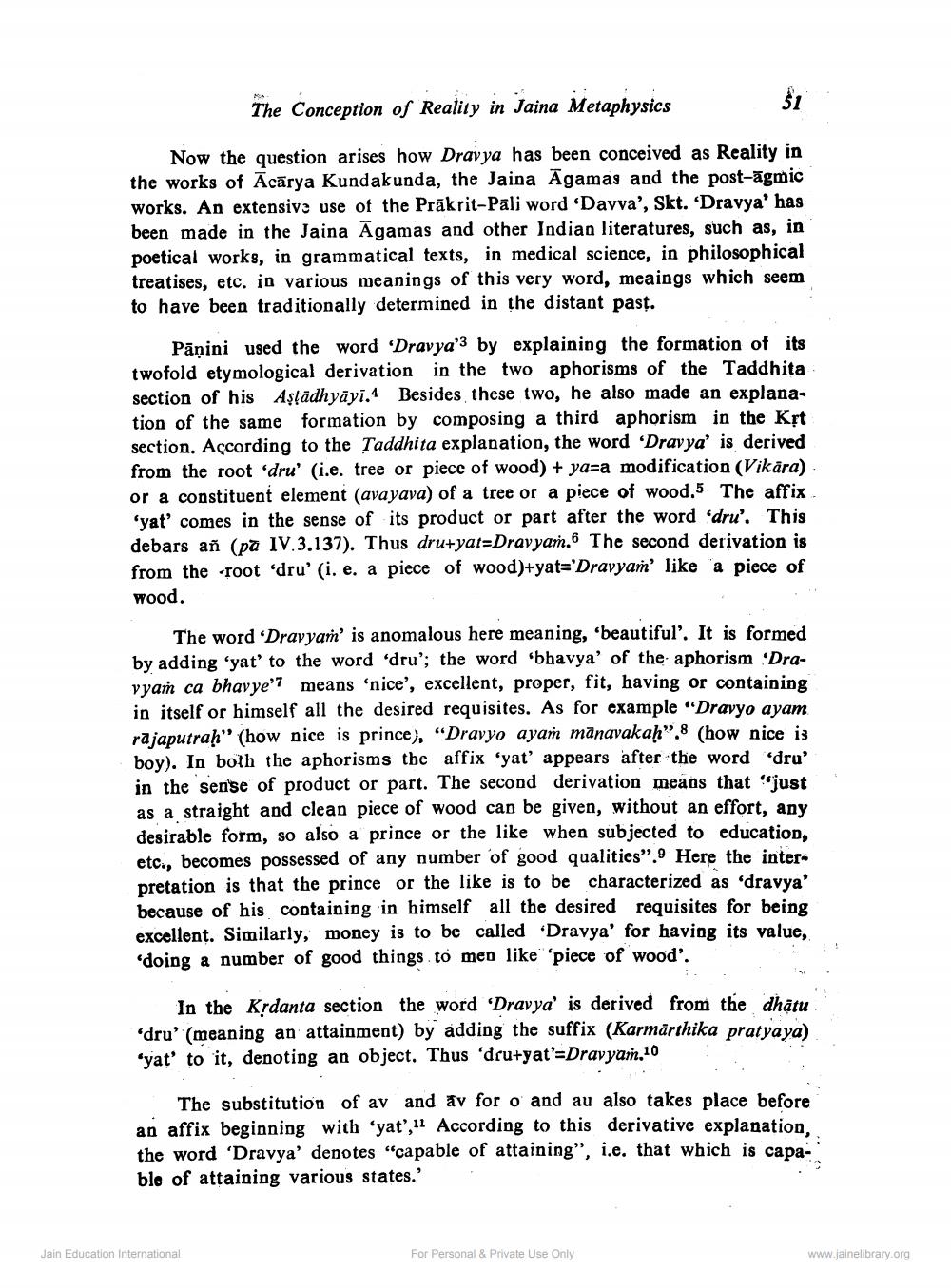________________
The Conception of Reality in Jaina Metaphysics
Now the question arises how Dravya has been conceived as Reality in the works of Ācārya Kundakunda, the Jaina Āgamas and the post-āgmic works. An extensive use of the Prākrit-Pali word 'Davva', Skt. ‘Dravya' has been made in the Jaina Āgamas and other Indian literatures, such as, in poetical works, in grammatical texts, in medical science, in philosophical treatises, etc. in various meanings of this very word, meaings which seem to have been traditionally determined in the distant past.
Pānini used the word 'Dravya'3 by explaining the formation of its twofold etymological derivation in the two aphorisms of the Taddhita section of his Astādhyāyi. Besides these two, he also made an explanation of the same formation by composing a third aphorism in the Krt section. According to the Taddhita explanation, the word 'Dravya' is derived from the root 'dru' (i.e. tree or piece of wood) + yara modification (Vikāra) or a constituent element (avayava) of a tree or a piece of wood,5 The affix ‘yat' comes in the sense of its product or part after the word 'dru'. This debars añ (pā IV.3.137). Thus dru+yat=Dravyam. The second derivation is from the root 'dru' (i. e, a piece of wood)+yat='Dravyam' like a piece of wood.
The word 'Dravyam' is anomalous here meaning, 'beautiful. It is formed by adding ‘yat' to the word 'dru'; the word 'bhavya' of the aphorism 'Dravyan ca bhavye' means 'nice', excellent, proper, fit, having or containing in itself or himself all the desired requisites. As for example "Dravyo ayam rajaputrah” (how nice is prince), “Dravyo ayam mānavakaḥ”. 8 (how nice is boy). In bolh the aphorisms the affix ‘yat' appears after the word 'dru' in the sense of product or part. The second derivation means that just as a straight and clean piece of wood can be given, without an effort, any desirable form, so also a prince or the like when subjected to education, etc., becomes possessed of any number of good qualities”.9 Here the inter pretation is that the prince or the like is to be characterized as 'dravya' because of his containing in himself all the desired requisites for being excellent. Similarly, money is to be called 'Dravya' for having its value, 'doing a number of good things to men like 'piece of wood'.
In the Krdanta section the word 'Dravya' is derived from the dhatu 'dru' (meaning an attainment) by adding the suffix (Karmärthika pratyaya) ‘yat' to it, denoting an object. Thus 'dru+yat'=Dravyam.10
The substitution of av and av for o and au also takes place before an affix beginning with ‘yat’,11 According to this derivative explanation, the word 'Dravya' denotes "capable of attaining", i.e. that which is capablo of attaining various states.'
Jain Education International
For Personal & Private Use Only
www.jainelibrary.org




